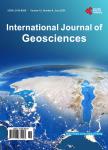Applying ArcGIS to Estimate the Rates of Shoreline and Back-Shore Area Changes along the Nile Delta Coast, Egypt
Applying ArcGIS to Estimate the Rates of Shoreline and Back-Shore Area Changes along the Nile Delta Coast, Egypt作者机构:Coastal Research Institute Alexandria Egypt
出 版 物:《International Journal of Geosciences》 (地球科学国际期刊(英文))
年 卷 期:2017年第8卷第3期
页 面:332-348页
学科分类:1002[医学-临床医学] 100214[医学-肿瘤学] 10[医学]
主 题:Nile Delta Coast Shoreline Change Rate Erosion Accretion Marine Structures and Geographic Information System (GIS)
摘 要:This study was undertaken to apply Geographic Information System “GIS (ArcGIS 9.3) for calculating shoreline change rates and back-shore surface area due to these changes, particularly after constructing marine structures: including seawall, detached breakwaters and groins. Modelbuilder in ArcGIS software was used to design and develop an automated technique, module, for estimating such changes (rate and area). These changes are deduced from analysis of beach-nearshore profile surveys between 1970 and 2010 and shoreline position versus prevailing coastal processes. The results show that the major erosion occurred along the Delta promontories;the shoreline of Rosetta retreated (1.6 km) at an average rate of 60 m/yr with loss of back-shore area 6.4 km2;the coastline of Burullus bulge recessed at mean rate of 6 m/yr and decreasing in beach area of 1.31 km2;and at Damietta (Ras El-Bar) the shoreline moved backward (6 m/yr) with disappeared in beach area of 1.13 km2. The shape and orientation of these promontories contributed to create alternation between wave convergence zone that eventually causes erosion, and divergence zones that experienced shoreline accretion. Finally, the engineering structures didn’t solve or stop the erosion problem but shifted it from one place to another.



